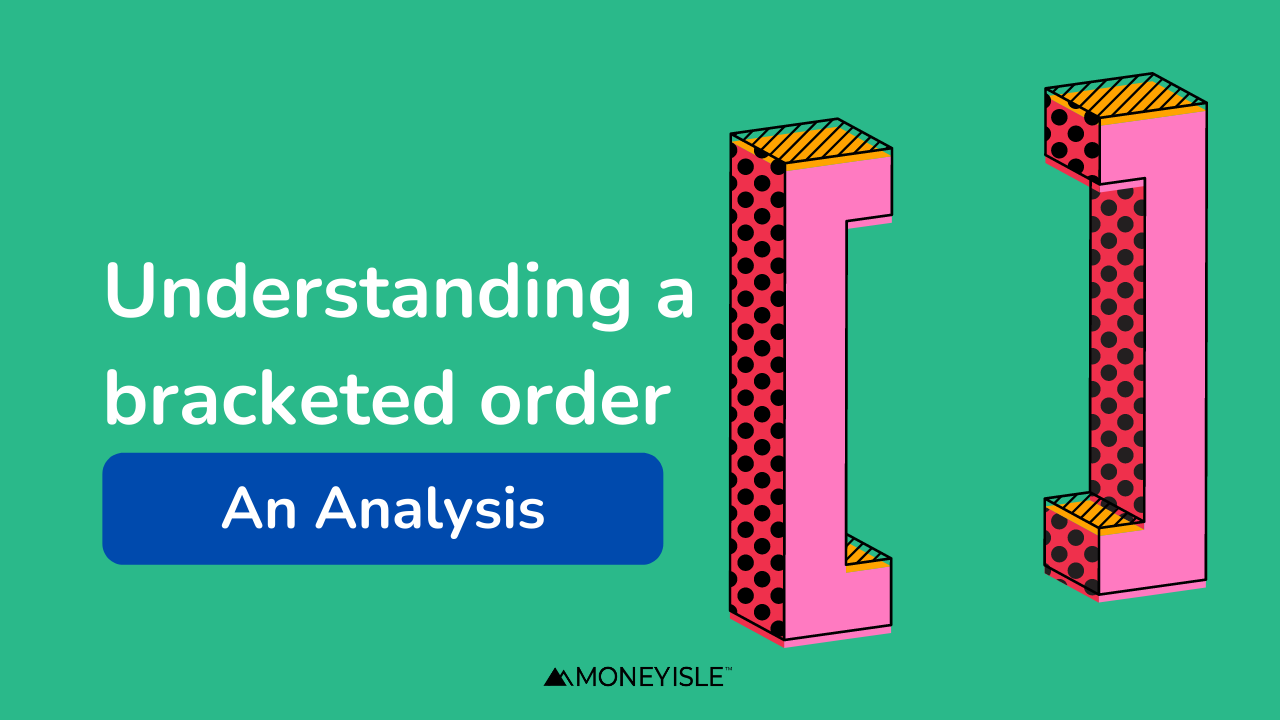In intraday trading, bracketed orders are a sort of market order which can only be made during that time period. Such orders combine a purchase order with a stop-loss order as well as a target order in one transaction.
Bracketed orders are intended to assist stock market traders with squaring off a preferred standpoint at the conclusion of the trading day.
However, the outcome of the strategy is totally reliant on the stock that is chosen, as well as how the trader chooses the stop-loss and target price levels.
What is a bracketed order?
A bracketed order is a combination of three orders into a single order. In keeping with the name, bracketed orders are intended to “bracket” your order. The result is that, in addition to the main order, two opposing side orders will be made in the same transaction.
This technique may be used for both buy and sell orders. Assuming the original order is a buy order, both the goal and stop-loss orders will indeed be sell orders in the same situation.
In the same way, if the first order is a sale order, the second and third orders will be purchase orders, and so on.
Consider the following scenario – an investor sets a limit order to purchase stock in a firm for Rs 100 per share. In addition, a stop-loss order of Rs 92 per share and a goal order of Rs 105 per share are placed on the same day.
We can observe that the investor’s primary position of Rs 100 is surrounded by two limit orders, one of which is higher-priced and the other of which is lower-priced. It is only possible to place either of the two limit orders.
Supposing that an investor makes a limit order for Rs 100, and the stock price increases and reaches Rs 105, the target order will be automatically issued, and the stop-loss order would be canceled, as illustrated in scenario 1.
Benefits of a bracket Order
The first advantage of using a bracket order is that it allows traders to make three orders at the same time.
It is particularly handy for daily traders who need to close down a successful position in 6 hours or less. Trailing stop loss is a feature that certain brokers provide, which enables the stop-loss level to be modified on an ongoing basis, based on how the market price is changing or in which direction it’s moving.
Due to the obvious way bracket orders function, they may be able to assist intraday traders in reducing some of their risk exposure. It will either assist traders in booking a lucrative position with the target order in place or assist traders in curtailing losses to a certain level with the stop-loss order in place, depending on the situation.
Bracket Order and Cover Order
Cover order is yet another sort of order that intraday traders might use in their trading. A considerable discrepancy exists between the bracket and cover ordering systems.
In contrast to cover orders, which are made up of two rather than three, bracket orders are made up of just one order.
The term “cover order” refers to a combination of an initial order as well as a stop-loss order. It is not equipped with a profits booking/target order feature.
The only order a trader may put in addition to the first order is a mandatory stop-loss order. The stop-loss order may also be quite useful in this situation since it allows the trader to keep risks under control.
Both sorts of orders have certain similarities, but they are not identical. Both are matched up against each other during the concurrent trading session.
If somehow the stop-loss order is not implemented in the event of a cover order, the order will be terminated at the conclusion of the trading session.
Cover orders, similar to bracket orders, are not able to be carried over to the following trading session for any reason.
In Conclusion
Such order types should only be attempted by those who have a thorough understanding of how the stock market operates as well as the intricacies of intraday trading.
There are a variety of technical indicators, such as dynamic oscillators and candlestick charts, that must be understood and used in order to comprehend and evaluate stocks for intraday trading.
When stock market players are not familiar with the peculiarities of intraday trading, it may be difficult to close off a successful session inside the same trading day.
Study, investigate, and make educated decisions as an investor! Cover orders have developed into bracket orders, which are an advanced variant of cover orders.











